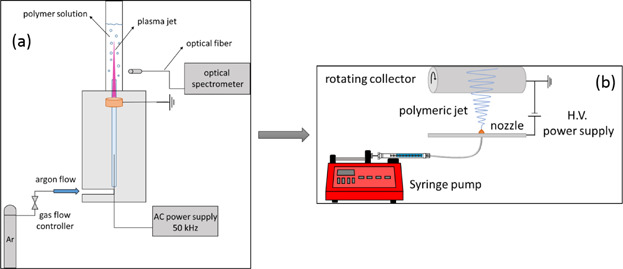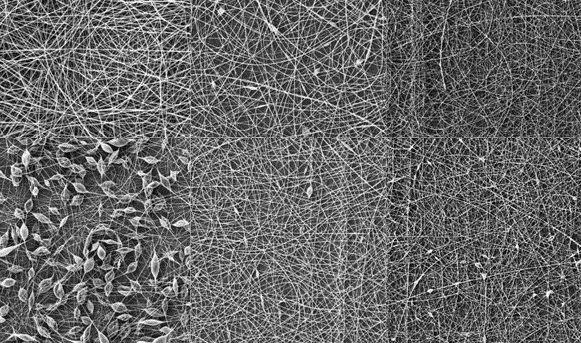In recent years, the chemical processes induced in liquids by non‐thermal atmospheric pressure plasmas have been extensively investigated due to the high potential of plasma in a wide variety of applications including synthetic chemistry. A very novel application of this promising research field is the use of non‐thermal plasma technology for the treatment of pre‐electrospinning polymer solutions. Electrospinning is well known as a cost‐effective and versatile technique for the fabrication of polymer‐based nano/micro fibers. Such synthetic and natural polymeric nanofibrous mats are of great interest for biomedicine, biotechnology, and industry: the nanofibers can be used for biological and/or chemical sensors, wound healing, drug delivery, and tissue engineering.
Several processing parameters determine the morphology of the resultant nanofibers, e.g., the electrospinning working parameters, the properties of the electrospinning polymer solution, and ambient conditions. However, the effects of physical/chemical treatments of polymer solutions prior to the electrospinning process in an effort to improve electrospinnability have not been widely studied. A few methods have been reported to enhance the electrospinnability of polymer solutions but these methods often involve additional costs, safety, and environmental concerns. An efficient, environmentally benign, and non‐toxic method to improve the electrospinnability of polymer solutions is thus required.

Schematic representation of (a) the atmospheric‐pressure argon plasma jet for PEPT, and (b) the electrospinning device
A team of Belgian researchers recently investigated the use of non‐thermal plasma technology for the treatment of pre‐electrospinning polymer solutions. Pre‐electrospinning plasma treatment (PEPT) has been found to enhance the electrospinnability, and helped obtaining thinner and bead‐free nanofibers at significantly lower polymer concentrations. But a detailed investigation of the gas phase plasma and the plasma‐induced changes in the liquid solvents was missing so far: the team studied the resultant electrospun nanofibers in order to unravel the occurring plasma‐liquid interactions using polylactic acid (PLA) as a target polymer. They discovered that the increased viscosity and conductivity induced by PEPT positively affected the electrospinnability of PLA and the morphology of the resultant PLA nanofibers. Read more on the study in the latest issue of Journal of Biophotonics.

















